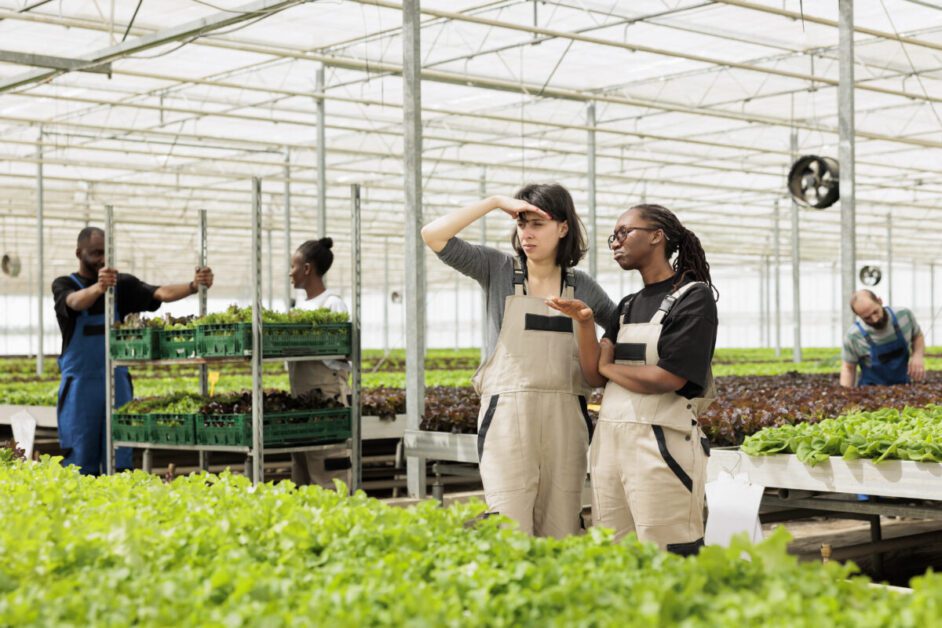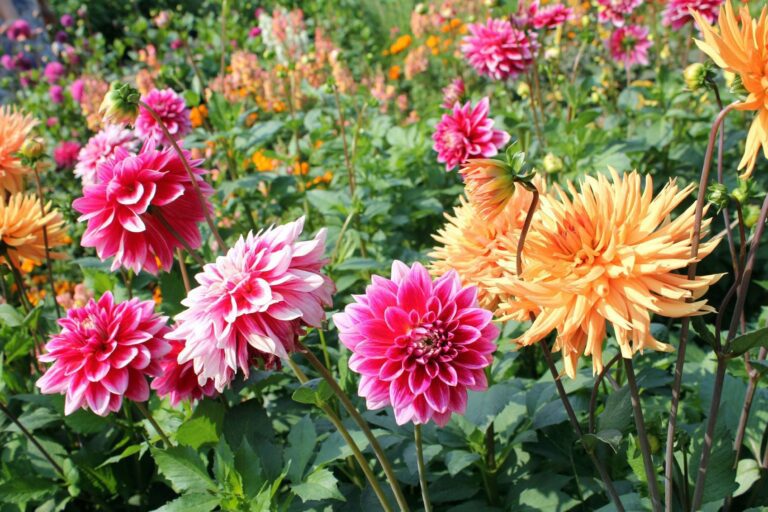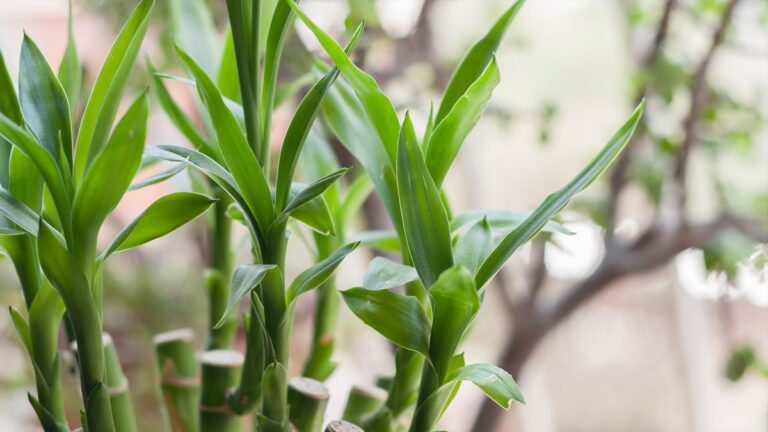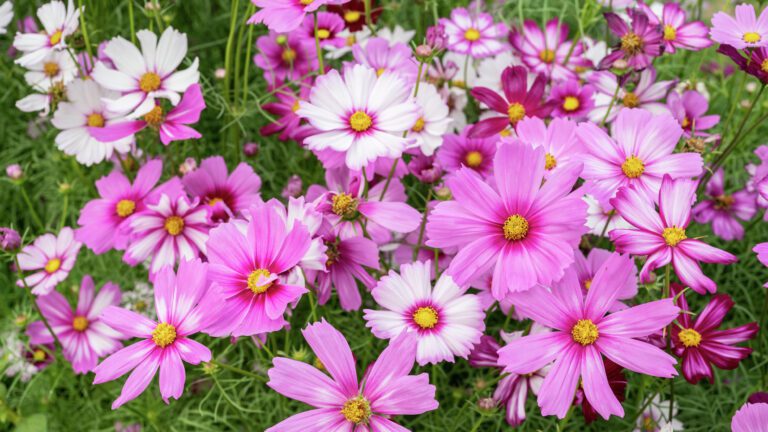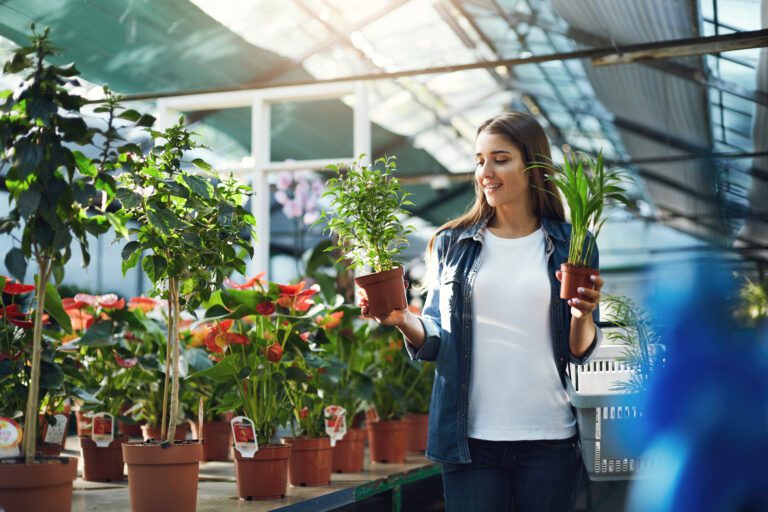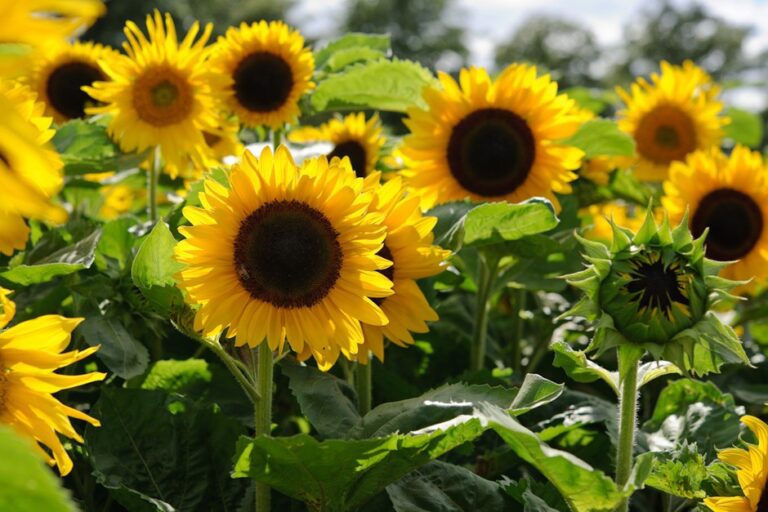Greenhouse Growing: A Guide to Growing Plants in a Controlled and Protected Environment
Table of Contents
1. Understanding the Basics of Greenhouse Structures
Greenhouse structures serve as a vital tool for gardening enthusiasts looking to cultivate plants in controlled environments. These structures, typically made of glass or plastic, create an enclosed space that helps regulate temperature, humidity, and light levels. By controlling these factors, gardeners can create an optimal growing environment for a variety of plants.
One of the key features of greenhouse structures is their ability to trap and retain heat. The transparent materials used, such as glass or polyethylene, allow sunlight to enter the greenhouse and warm the interior. This trapped heat creates a microclimate within the structure, enabling plants to thrive in conditions that may otherwise be unsuitable for their growth. Additionally, greenhouse structures also prevent heat loss during colder months, extending the growing season and allowing for cultivation throughout the year.
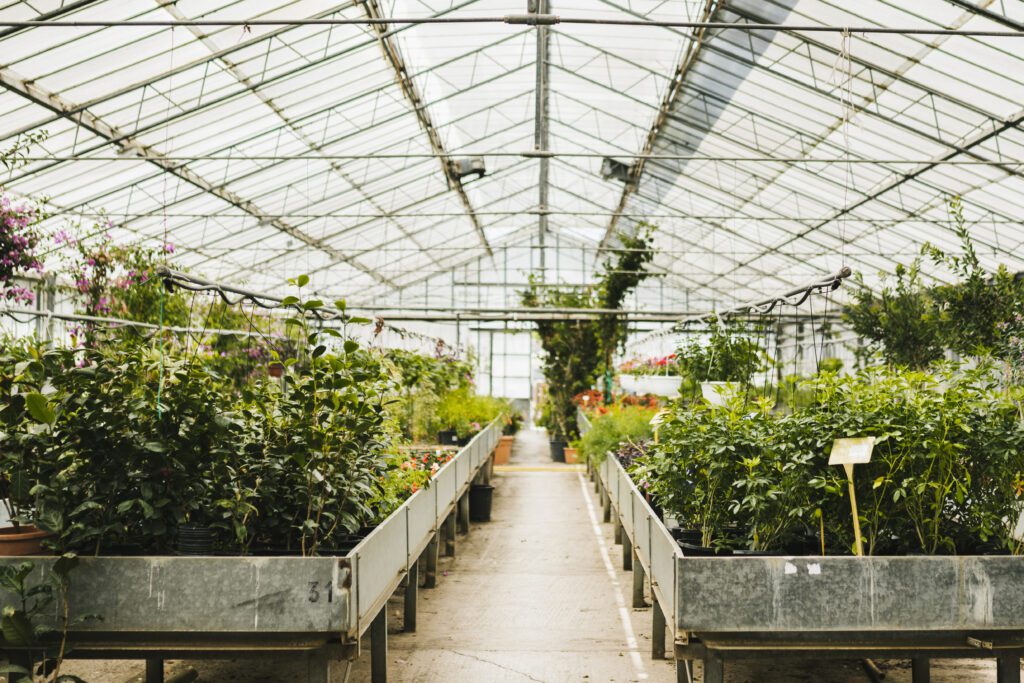
Another important aspect of greenhouse structures is their ability to regulate humidity levels. The enclosed space prevents excessive moisture from escaping, creating a higher-humidity environment. This is particularly advantageous for plants that require a humid environment, such as tropical species. By manipulating humidity levels, gardeners can mimic the conditions found in specific regions, enabling the successful cultivation of a wide range of plants.
In summary, greenhouse structures provide a controlled environment that allows gardening enthusiasts to create optimal growing conditions for their plants. By regulating temperature and humidity levels, these structures extend the growing season and enable the cultivation of plants that may otherwise struggle in certain climates. Understanding the basics of greenhouse structures is the first step towards harnessing the full potential of these invaluable tools.
2. Selecting the Right Location for Your Greenhouse
Selecting the right location for your greenhouse is a crucial step in ensuring optimal plant growth and productivity. Several factors need to be considered when choosing the site for your greenhouse. One of the key factors is sunlight exposure. Ideally, your greenhouse should be located in an area that receives ample sunlight throughout the day. Sunlight is essential for photosynthesis, the process through which plants convert light energy into chemical energy and produce food. To determine the sunniest spot in your garden, observe the area for a few days, noting the duration and intensity of sunlight in different locations.
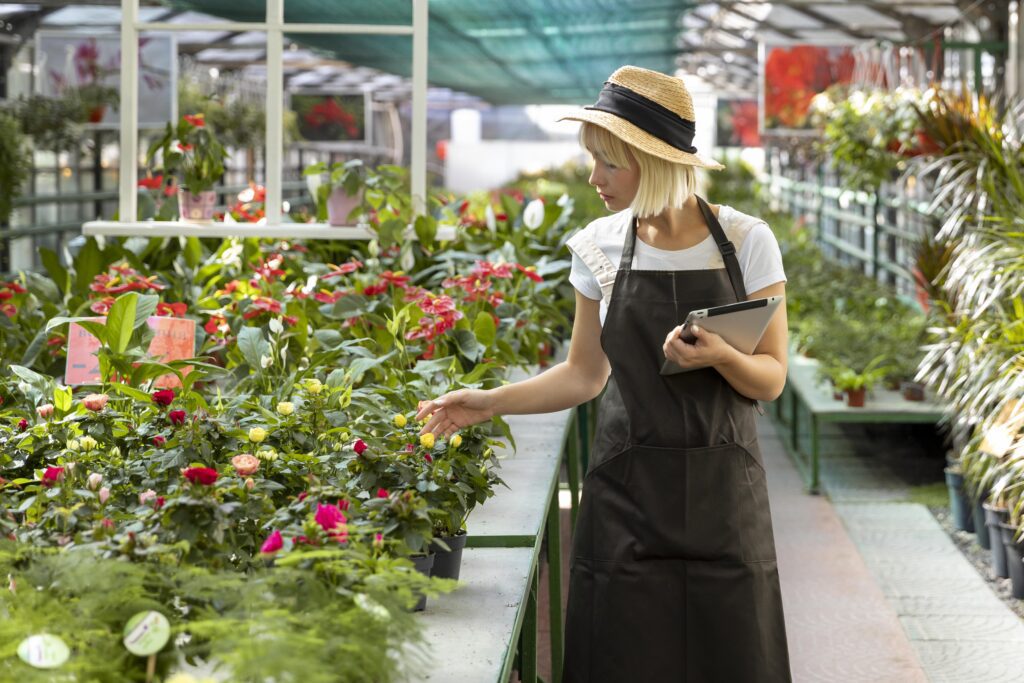
Another important consideration is the proximity to utilities and water sources. Your greenhouse will require access to electricity for lighting, heating, and other equipment. Additionally, an adequate water supply is necessary for irrigation and maintaining optimal humidity levels. Select a location that is conveniently located near a power source and a water supply. If these utilities are not readily available, you may need to make alternative arrangements, such as installing solar panels or a rainwater harvesting system.
These factors are just the beginning of your journey toward selecting the right location for your greenhouse. In the following sections, we will explore additional considerations such as wind exposure, soil quality, and potential obstructions. By carefully evaluating these factors, you can create an ideal environment for your plants and set yourself up for success in greenhouse gardening.
3. Essential Equipment and Tools for Greenhouse Growing
Essential Equipment and Tools for Greenhouse Growing
When it comes to greenhouse growth, having the right equipment and tools is essential for ensuring the success of your plants. Here are some key items that every greenhouse enthusiast should consider investing in:
1. High-quality greenhouse structure: The foundation of a productive greenhouse lies in its structure. Opt for a sturdy and durable greenhouse frame that can withstand various weather conditions. Choose materials such as aluminum or steel for maximum strength and longevity.
2. Heating and cooling systems: Maintaining the ideal temperature in your greenhouse is crucial for plant growth. Depending on your climate, you may need to invest in a heating system to keep your plants cozy during colder months, as well as a cooling system to prevent overheating in warmer seasons.
3. Lighting solutions: Natural sunlight is limited during certain times of the year or in regions with cloudy weather. Supplementing with artificial lighting can help ensure that your plants receive the right amount of light for photosynthesis. LED grow lights are an energy-efficient option that can mimic natural sunlight.
4. Irrigation system: Providing adequate watering and nutrient solutions to your plants is vital. Consider installing an automatic irrigation system with timers and sensors to deliver water directly to the roots. This not only saves time but also ensures consistent watering and reduces the risk of over or under-watering.
5. Essential gardening tools: Just like any other gardening project, you’ll need a set of basic gardening tools such as a hand trowel, pruning shears, and a watering can. Additionally, having a sturdy workbench, potting table, and shelving units will make greenhouse maintenance and plant care tasks easier and more organized.
Remember, investing in high-quality equipment and tools from reputable suppliers may initially seem costly, but it ensures long-term productivity and success in your greenhouse. Stay tuned for our upcoming articles where we will dive deeper into each of these essential items and provide more specific guidance on their selection and usage.
4. Ensuring Proper Ventilation and Air Circulation in Your Greenhouse
Proper ventilation and air circulation are crucial components of a successful greenhouse setup. Without them, the air inside the structure can become stagnant, leading to a host of problems for your plants. Adequate ventilation helps maintain a healthy greenhouse environment by ensuring a steady exchange of fresh air, controlling temperature and humidity levels, and preventing the buildup of harmful gases.
One effective way to ensure proper ventilation is by installing ventilation systems such as fans or vents in your greenhouse. These systems help to circulate air, removing excess heat and humidity and preventing the growth of mold or mildew. By strategically placing these ventilation systems, you can create a uniform airflow throughout the greenhouse, minimizing temperature and humidity fluctuations.
Another important aspect to consider is the positioning of vents and fans. Vents should be placed at the highest point of the greenhouse to allow hot air to escape, while fans should be positioned strategically to promote air movement. Additionally, it is essential to monitor the weather conditions and adjust the ventilation accordingly. For instance, during hot summer days, opening doors and windows, and using shading devices can help reduce temperature spikes and maintain optimal growing conditions for your plants.
In conclusion, proper ventilation and air circulation are essential for maintaining a healthy and thriving greenhouse environment. By investing in ventilation systems and strategically placing vents and fans, you can ensure a steady exchange of fresh air, control temperature and humidity levels, and promote optimal plant growth. However, it is important to continually monitor and adjust your ventilation system based on weather conditions and the specific needs of your plants to ensure their success.
5. Controlling Temperature and Humidity Levels for Optimal Plant Growth
Controlling temperature and humidity levels is crucial for creating an optimal environment that promotes healthy plant growth in a greenhouse. Maintaining the right balance of temperature and humidity ensures that plants receive the necessary conditions to thrive and produce high-quality yields.
Temperature control is key in a greenhouse, as it directly influences the growth and development of plants. Most plants grow best within a specific temperature range, and deviations from this range can have adverse effects. A well-insulated greenhouse combined with proper heating and ventilation systems can help maintain the desired temperature. Monitoring devices such as thermostats and temperature sensors can provide real-time data, allowing growers to make adjustments to the heating or cooling systems as needed.
Humidity levels also play a vital role in greenhouse cultivation. Different plant species have varying humidity requirements, and it is essential to maintain the optimal levels for each crop. High humidity can contribute to the growth of mold and mildew, which can harm plants, while low humidity can lead to moisture stress for the plants. To control humidity, greenhouse operators can use techniques such as using misters to increase humidity or employing dehumidifiers to remove excess moisture from the air. Regular monitoring of humidity levels and making necessary adjustments ensures that plants have a favorable growing environment.
By effectively controlling temperature and humidity levels, greenhouse growers can create an environment that maximizes plant growth potential and increases overall productivity. Implementing appropriate strategies and utilizing advanced techniques will provide gardening enthusiasts with the tools to achieve optimal plant growth in their greenhouses.
6. Watering Techniques and Irrigation Systems for Greenhouse Plants
Watering techniques and irrigation systems play a crucial role in maintaining optimal plant growth and productivity in a greenhouse environment. Proper watering ensures that plants receive the right amount of moisture, nutrients, and oxygen, promoting their overall health and development.
One of the most commonly used watering techniques in greenhouse gardening is drip irrigation. This system delivers water directly to the plant’s root zone, minimizing water wastage and reducing the risk of fungal diseases. By utilizing a network of tubes or pipes with emitters, drip irrigation provides a controlled and precise amount of water to individual plants. This method allows for efficient water distribution, preventing overwatering or underwatering. Additionally, this system can be automated, saving time and effort for greenhouse growers.
Another popular watering technique is the use of overhead sprinklers. This method involves spraying water over the plants in a fine mist, simulating rainfall. Overhead sprinklers are especially useful for crops that benefit from overhead moisture, such as leafy greens or delicate seedlings. However, it’s important to note that this technique may result in water loss due to evaporation or runoff. To overcome these challenges, greenhouse owners often use a combination of drip irrigation and overhead sprinklers, adapting to the specific needs of their crops.
In conclusion, selecting the right watering techniques and irrigation systems is vital for the success of greenhouse plants. Whether utilizing drip irrigation, overhead sprinklers, or a combination of both, greenhouse growers can ensure efficient water distribution, prevent water wastage, and promote healthy plant growth. By employing these techniques, gardening enthusiasts can cultivate thriving and productive plants in their greenhouses.
7. Choosing the Right Growing Medium for Your Plants
Choosing the right growing medium for your plants is crucial for their overall health and productivity. The growing medium, also known as the substrate or soilless mix, serves as the foundation for your plants’ root system and provides essential nutrients, water, and oxygen. When it comes to selecting the ideal growing medium, there are several factors to consider.
Firstly, the texture and composition of the growing medium are key determinants of its performance. A well-draining medium allows excess water to escape easily, preventing waterlogging and root rot. On the other hand, a medium with good water-holding capacity ensures that the plants receive adequate moisture between watering cycles. Additionally, the medium should have an appropriate balance of organic matter and mineral content to provide sufficient nutrients to the plants.
Furthermore, considering the specific needs of your plants is crucial in choosing the right growing medium. Some plants thrive in a purely inert medium, such as perlite or vermiculite, which allows for precise control over nutrient intake. Others, like potted ornamental plants, may benefit from a mix of organic matter, such as compost or peat moss, which enhances moisture retention and nutrient availability. Understanding the preferences of your plants will enable you to select a medium that supports their growth and development effectively.
Ultimately, choosing the right growing medium for your plants is a vital step in greenhouse growing. By considering factors such as drainage, water-holding capacity, and the specific needs of your plants, you can provide them with an optimal environment to thrive. Remember to conduct research and consult with horticultural experts to ensure your chosen medium aligns with the requirements of your plants and promotes their overall health and productivity.
8. Nutrient Management and Fertilization in Greenhouse Growing
Nutrient management and fertilization play a critical role in greenhouse growing, ensuring optimal plant health and growth. By providing the necessary nutrients, you can create an environment that supports robust and productive plants.
One key aspect of nutrient management is understanding the nutritional requirements of different crops. Different plants have varying nutrient needs, and it is important to tailor your fertilization practices accordingly. Conducting soil tests and analyzing the nutrient content can help you determine the deficiencies and formulate a suitable fertilizer regimen.
When it comes to fertilization, greenhouse growers often rely on both organic and inorganic fertilizers. Organic fertilizers, such as compost or manure, contribute to soil fertility by adding organic matter and slowly releasing essential nutrients over time. On the other hand, inorganic fertilizers, such as water-soluble salts or controlled-release granules, provide a quick and targeted nutrient boost. Balancing the use of these fertilizers ensures a steady supply of nutrients to meet the plants’ needs throughout their growth cycle.
Remember, proper timing and application methods are also crucial for effective nutrient management. Providing nutrients at the right stage of plant development and in the right dosage helps prevent nutrient imbalances and reduces the risk of nutrient deficiencies or toxicities. Additionally, using appropriate delivery systems, such as fertigation or foliar spraying, can enhance nutrient uptake and utilization by the plants.
In the following paragraphs, we will delve deeper into the specific nutrients required by greenhouse crops and explore different fertilization techniques. By implementing sound nutrient management practices, you can cultivate healthy and thriving plants that yield bountiful harvests in your greenhouse.
9. Pest and Disease Control Strategies in a Protected Environment
Pest and disease control is a crucial aspect of greenhouse growing in order to protect your plants and maximize their productivity. In a protected environment like a greenhouse, pests and diseases can thrive due to the ideal conditions they provide. Therefore, implementing effective control strategies is essential to maintain a healthy and thriving crop.
One of the fundamental approaches to pest and disease control in a greenhouse is through prevention. Implementing strict hygiene practices such as regularly cleaning the greenhouse and removing plant debris can help minimize the risk of pests and diseases. Additionally, practicing crop rotation and implementing proper spacing between plants can also help reduce the likelihood of pests and diseases spreading.
Another key strategy is the use of biological control methods. These methods involve introducing predators or beneficial insects that prey on the pests, effectively controlling their populations. This natural approach minimizes the need for chemical pesticides, making it an environmentally friendly and sustainable option. Integrating biological control methods with appropriate monitoring and identification techniques helps ensure effective pest control without harming beneficial organisms or compromising plant health.
• Regularly clean the greenhouse and remove plant debris
• Practice crop rotation and proper spacing between plants
• Introduce predators or beneficial insects to control pest populations
• Use appropriate monitoring and identification techniques for effective pest control without harming beneficial organisms or compromising plant health
10. Maximizing Space Utilization and Layout Design in Your Greenhouse
Maximizing space utilization and layout design in your greenhouse is crucial for maximizing your plant yield and overall efficiency. By carefully planning and organizing the layout of your greenhouse, you can optimize space usage and create an environment that promotes healthy plant growth.
One effective strategy is to use vertical space by incorporating trellises, hanging baskets, or shelves. This allows you to grow plants vertically, thereby utilizing space that would otherwise go unused. Additionally, utilizing tiered shelving can help maximize space and provide adequate light access to all plants.
Another important consideration is the arrangement of crops based on their growth requirements. Grouping plants with similar needs together not only simplifies watering and fertilization processes, but it also allows for efficient space utilization. For instance, placing plants with high moisture requirements together can be advantageous as it allows for more targeted irrigation.
Furthermore, using raised beds or containers can help optimize space and improve drainage. By creating different levels within your greenhouse, you can make the most of the available area and provide each plant with optimal growing conditions.
Remember, a well-thought-out greenhouse layout can significantly enhance productivity and make gardening a more enjoyable experience. By implementing these space utilization and layout design strategies, you can create an efficient and thriving greenhouse environment.
11. Seasonal Considerations and Crop Rotation in Greenhouse Growing
When it comes to greenhouse growing, considering the seasonal variations and implementing proper crop rotation techniques can greatly enhance the success of your cultivation endeavors. Seasonal considerations play a crucial role in determining the type of crops that can be grown at specific times of the year and how they will thrive in a controlled environment.
Understanding the unique requirements of each season is essential for greenhouse growers. For instance, during the colder months, it is important to choose cold-hardy crops that can withstand lower temperatures. On the other hand, in the warmer months, heat-tolerant varieties should be prioritized. By selecting crops that are well-suited to the prevailing weather conditions, greenhouse gardeners can ensure optimal growth and productivity.
In addition to selecting appropriate crops for each season, implementing crop rotation techniques is equally important. Crop rotation involves changing the type of crops grown in specific areas of the greenhouse over time. This practice helps prevent the buildup of pests, diseases, and nutrient depletion in the soil. By rotating crops, greenhouse growers can disrupt pest and disease life cycles, reduce the risk of plant infections, and maintain soil fertility. However, it is essential to carefully plan crop rotation schedules to ensure that crops with similar nutrient requirements are rotated together, providing the maximum benefit to plant health and growth. By incorporating these seasonal considerations and implementing strategic crop rotation practices, greenhouse growers can optimize their yields and maintain a healthy growing environment.
12. Tips for Successful Harvesting and Post-Harvest Handling in a Greenhouse
Tips for Successful Harvesting and Post-Harvest Handling in a Greenhouse:
Harvesting crops from a greenhouse requires careful technique and attention to detail to ensure the best quality produce. One important tip is to harvest fruits and vegetables at their peak ripeness. This not only guarantees the best flavor and texture but also ensures maximum nutrient content. Different types of crops have specific indicators of ripeness, such as color, size, and texture. For example, tomatoes should be picked when they are fully ripe and have a vibrant color, while leafy greens like lettuce and spinach should be harvested when the leaves are still tender and before they start to flower.
Once the crops are harvested, post-harvest handling plays a crucial role in maintaining their freshness and extending their shelf life. It is important to handle the produce gently to avoid bruising or damaging the delicate tissue. Careful washing and cleaning of the harvested crops are essential to remove any dirt, debris, or pesticide residue. After washing, it is advisable to allow the produce to air dry before storing it to prevent moisture buildup and potential fungal growth. Proper storage conditions, such as maintaining the right temperature and humidity levels, also play a vital role in preserving the quality of the harvested crops.
By implementing these tips, greenhouse growers can ensure the successful harvesting and post-harvest handling of their crops, resulting in high-quality produce that is both fresh and nutritious. The attention to detail and careful handling will not only please the palate but also contribute to a more sustainable and efficient greenhouse operation.
Note: The headings provided above are just a suggestions, and you can modify them as per your content requirements.
Understanding the Basics of Greenhouse Structures
Greenhouse structures are a vital component of successful greenhouse growth. These structures are designed to create an environment that is conducive to plant growth by regulating temperature, humidity, and light levels. When selecting a greenhouse structure, there are several factors to consider, such as the size, shape, and material of the structure. Additionally, the type of glazing used for the walls and roof can also impact the greenhouse’s performance.
One common type of greenhouse structure is the hoop house, which consists of a series of arched frames covered in plastic film. Hoop houses are easy to construct and relatively inexpensive, making them a popular choice for beginners. Another popular option is the glass greenhouse, which provides better light transmission but can be more expensive and requires more maintenance. Polycarbonate greenhouses are also gaining popularity due to their durability and energy efficiency. Regardless of the type of structure chosen, it is important to ensure that it is built on a sturdy foundation and properly sealed to prevent drafts and pest infestations. By understanding the basics of greenhouse structures, gardeners can make informed decisions to create an ideal growing environment for their plants.
What are the advantages of using a greenhouse structure for plant cultivation?
Greenhouse structures provide a controlled environment for plants, offering protection from external elements such as extreme weather conditions, pests, and diseases. They also allow for extended growing seasons, increased crop yield, and the ability to grow plants that are not native to the area.
How do I choose the right location for my greenhouse?
When selecting a location for your greenhouse, consider factors such as sun exposure, access to water and electricity, wind patterns, and proximity to your home or storage areas. It is important to choose a spot that receives ample sunlight throughout the day and is sheltered from strong winds.
What essential equipment and tools do I need for greenhouse growing?
Some essential equipment and tools for greenhouse growing include a heating system, cooling system, fans for air circulation, irrigation system, shading materials, benches or shelves for plant display, and basic gardening tools such as pruners, shovels, and watering cans.
How can I ensure proper ventilation and air circulation in my greenhouse?
Proper ventilation in a greenhouse is crucial to maintain air quality and prevent the buildup of excessive heat and humidity. This can be achieved through the use of vents, fans, and louvers to allow for the exchange of fresh air. Installing a fan or two strategically can help improve air circulation within the greenhouse.
How can I control temperature and humidity levels in my greenhouse?
Temperature and humidity levels can be controlled in a greenhouse by using a combination of heating and cooling systems, such as heaters and evaporative cooling pads. Additionally, monitoring devices like thermometers and hygrometers can help you track and adjust the conditions as needed.
What are the recommended watering techniques and irrigation systems for greenhouse plants?
The watering techniques and irrigation systems for greenhouse plants can vary depending on the type of plants you are growing. Common methods include hand watering with a watering can or hose, drip irrigation systems, or overhead sprinklers. It is important to water plants thoroughly but avoid overwatering to prevent waterlogged roots.
How do I choose the right growing medium for my plants in a greenhouse?
When selecting a growing medium for your plants in a greenhouse, consider factors such as the plant’s specific needs, water retention capabilities, and nutrient content. Common options include potting soil mixes, peat moss, coconut coir, and perlite. Conducting a soil test can help determine the appropriate pH and nutrient levels for optimal plant growth.
What is nutrient management and fertilization in greenhouse growing?
Nutrient management involves providing plants with the necessary nutrients through fertilization and maintaining proper nutrient levels in the growing medium. This can be achieved through the use of organic or synthetic fertilizers, compost, or hydroponic nutrient solutions. Regular monitoring and adjusting of nutrient levels are essential for healthy plant development.
How can I effectively control pests and diseases in a greenhouse environment?
To control pests and diseases in a greenhouse, it is important to implement preventive measures such as regular plant inspections, proper sanitation practices, and the use of pest-resistant plant varieties. Integrated pest management techniques, including biological controls, organic pesticides, and physical barriers, can also be employed.
How can I maximize space utilization and layout design in my greenhouse?
To maximize space utilization in a greenhouse, consider utilizing vertical space by using hanging baskets or trellises, implementing staggered planting schedules, and utilizing shelving or bench systems. Planning the layout design carefully can help ensure efficient use of space while allowing for ease of movement and maintenance.
What are the seasonal considerations and benefits of crop rotation in greenhouse growing?
Seasonal considerations in greenhouse growing involve adjusting temperature, light exposure, and watering schedules to mimic natural seasonal changes. Crop rotation is beneficial as it helps prevent the buildup of pests and diseases, improves soil health, and optimizes the use of nutrients. Rotating crops also allows for diversification and improved overall greenhouse productivity.
What are some tips for successful harvesting and post-harvest handling in a greenhouse?
When harvesting greenhouse-grown crops, it is important to harvest at the appropriate maturity stage, handle the plants gently to avoid damage, and promptly cool the harvested produce to preserve freshness. Post-harvest handling techniques such as proper cleaning, sorting, and packaging should be followed to maintain the quality and extend shelf life.

Kanike Sreekanth, a prolific writer at SouthElMonteHydroponics, brings a unique blend of creativity and scientific rigor to the table. With a degree in Horticulture from a prestigious institution, Kanike’s expertise spans hydroponic farming, plant biology, and agricultural sustainability. Their passion for exploring innovative cultivation methods and promoting environmental stewardship drives them to uncover new insights in the realm of hydroponics. Kanike’s writing serves as a conduit for sharing their knowledge and inspiring others to embrace alternative farming practices for a more sustainable future.

